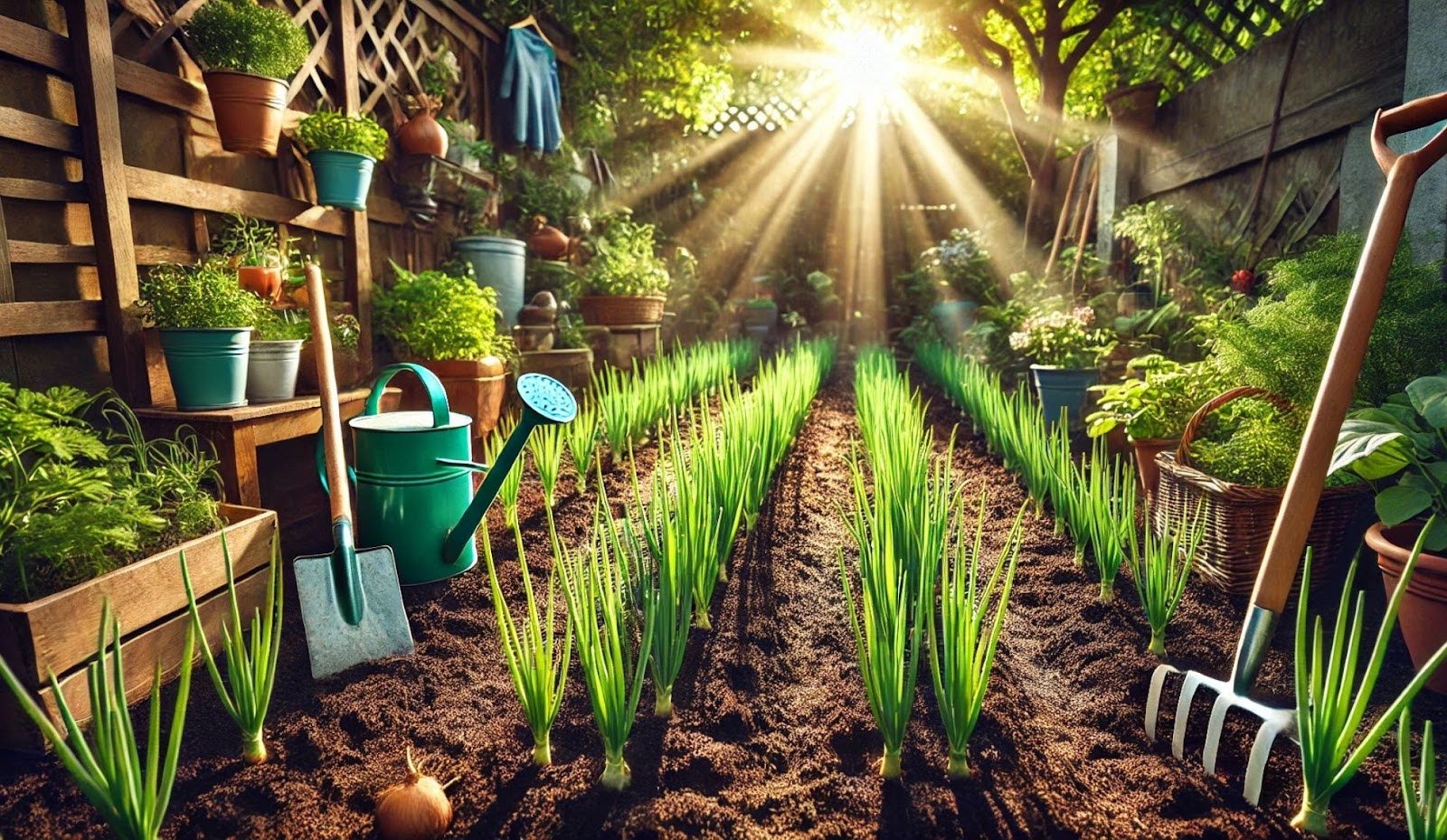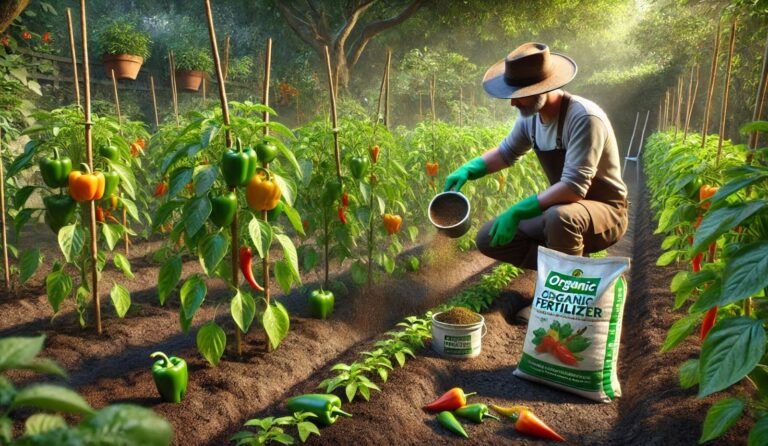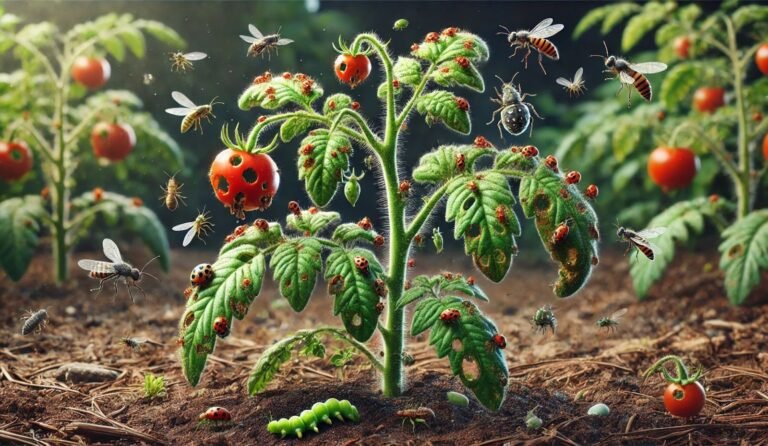How to Plant Green Onion Easily in Your Backyard Garden
How to plant green onion might be way easier than you think—and way more satisfying too. Whether you’re working with a tiny windowsill or a full-on backyard, green onions are the perfect gateway into gardening. They grow fast, don’t ask for much, and give you fresh flavor on repeat. You don’t need to be a green thumb or invest in fancy tools.
With a few scraps or some seeds and a sunny spot, you’ll be growing your own in no time. Keep reading, because this guide is all about making it easy, fun, and totally doable—even if you’ve never planted a thing before.
Why Grow Green Onions?
Green onions, also known as scallions or spring onions, are versatile in the kitchen and remarkably easy to grow. Their rapid growth cycle means you can harvest them multiple times throughout the year, making them a cost-effective and sustainable addition to your home garden. Moreover, cultivating green onions reduces food waste, especially when regrowing from kitchen scraps, and provides the satisfaction of harvesting your own produce.
Understanding Green Onions
Green onions belong to the Allium family, which includes garlic, leeks, and chives. Unlike their bulbous counterparts, green onions are harvested before the bulb fully develops, resulting in a milder flavor and a tender texture. Their entire stalk, from the white base to the green tops, is edible and commonly used in various cuisines worldwide.
Choosing the Right Variety
While many green onions are suitable for home cultivation, selecting the right variety can enhance your gardening experience. Some popular options include ‘White Lisbon’ and ‘Evergreen Bunching,’ both known for their resilience and flavor. These varieties are well-suited for both indoor and outdoor planting, offering flexibility based on your available space.
Planting Green Onions Outdoors
Selecting the Ideal Location
Green onions thrive in areas that receive full sun, ideally 6-8 hours daily. Choose a location with well-draining soil to prevent waterlogging, which can lead to root rot. Raised beds or garden plots enriched with organic compost provide an optimal environment for growth.
Soil Preparation
Before planting, till the soil to a depth of 6-8 inches, removing any debris or weeds. Incorporate compost or well-rotted manure to enhance soil fertility. Aim for a soil pH between 6.0 and 7.0, which is ideal for green onion cultivation.
Planting from Seeds
Sow green onion seeds directly into the prepared soil, spacing them about 1/4 inch deep and 1 inch apart. Rows should be spaced approximately 12 inches apart to allow for adequate airflow and growth. Keep the soil consistently moist until germination occurs, typically within 7-14 days.
Planting from Sets or Transplants
Alternatively, you can plant green onion sets or transplants, which are immature bulbs or seedlings. Plant them 1 inch deep and 2 inches apart, ensuring the roots are well-covered with soil. Water thoroughly after planting to establish strong root systems.
Growing Green Onions Indoors

For those with limited outdoor space, green onions can be successfully grown indoors, providing fresh produce year-round.
Container Selection
Choose containers with drainage holes to prevent water accumulation. A depth of at least 6 inches is recommended to accommodate root growth. Window boxes, pots, or recycled containers can all serve as suitable planters.
Soil and Fertilization
Use a high-quality potting mix enriched with organic matter. Incorporate a balanced, slow-release fertilizer to provide essential nutrients. Alternatively, liquid fertilizers can be applied every 2-3 weeks to support continuous growth.
Light Requirements
Place containers near a south-facing window to ensure adequate sunlight exposure. If natural light is insufficient, consider using grow lights to supplement, ensuring plants receive 12-16 hours of light daily.
Watering and Maintenance
Maintain consistent soil moisture, watering when the top inch feels dry to the touch. Avoid overwatering, which can lead to fungal issues. Regularly trim the green tops to encourage new growth and prevent the plant from becoming leggy.
Regrowing Green Onions from Kitchen Scraps
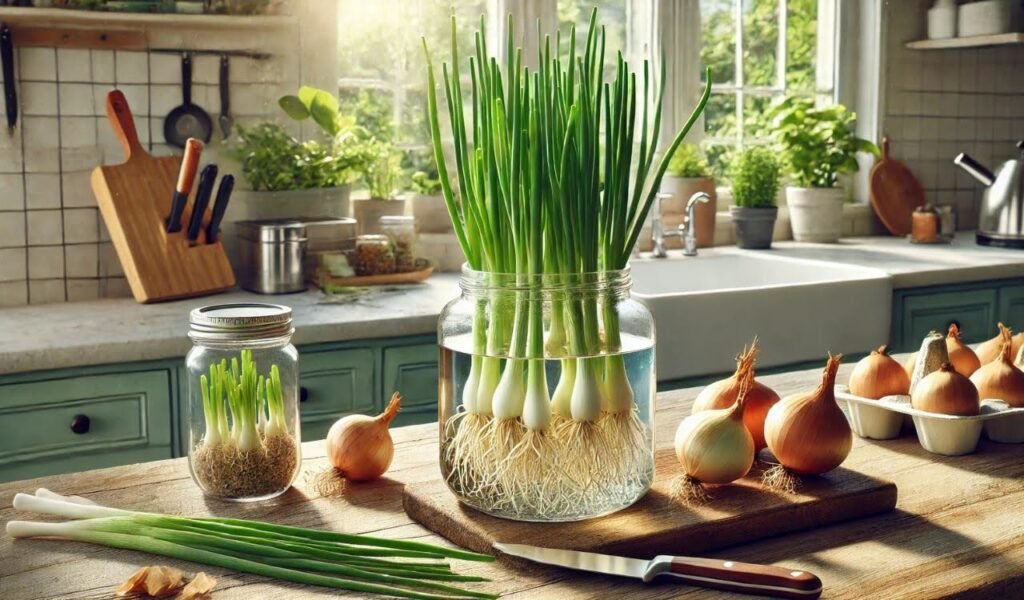
One of the most sustainable methods to grow green onions is by regrowing them from kitchen scraps.
Step-by-Step Guide
- After using the green tops, retain the white root ends, ensuring they are at least 1-2 inches long.
- Place the root ends in a glass or jar with enough water to cover the roots, leaving the tops exposed.
- Position the container on a sunny windowsill, changing the water every 2-3 days to prevent bacterial growth.
- Within a few days, green shoots will begin to emerge.
- Once the shoots reach 4-6 inches, transplant them into soil for continued growth and nutrient access.
This method not only reduces waste but also provides a continuous supply of green onions with minimal effort.
Caring for Your Green Onion Plants
Proper care ensures healthy growth and a bountiful harvest.
Watering
Green onions require consistent moisture. Water the plants regularly, ensuring the soil remains moist but not waterlogged. Mulching can help retain soil moisture and suppress weed growth.
Fertilization
Apply a nitrogen-rich fertilizer every 3-4 weeks to promote lush, green foliage. Organic options like fish emulsion or compost tea are excellent choices for sustainable gardening.
Pest and Disease Management
Monitor plants for common pests such as aphids and thrips. Introducing beneficial insects like ladybugs can help control pest populations. Ensure proper spacing and airflow to prevent fungal diseases.
Harvesting and Storage
Green onions are typically ready for harvest 60 to 90 days after planting, depending on the variety and growing conditions. You’ll know they’re ready when the stalks reach about 6 to 8 inches in height and are as thick as a pencil. To harvest, gently pull the entire plant from the soil, or, if you prefer a continuous harvest, snip off the green tops about an inch above the soil level.
This method allows the plant to regrow, providing multiple harvests throughout the season. After harvesting, rinse the green onions thoroughly to remove any soil. They can be stored in the refrigerator for up to a week. For longer storage, consider chopping and freezing them in airtight containers or freezer bags. This way, you’ll have a ready supply of green onions to enhance your dishes anytime.
Common Pests and Diseases
While green onions are relatively hardy, they can occasionally fall prey to pests and diseases. Common pests include onion maggots, thrips, and aphids. Regularly inspect your plants for signs of infestation, such as discolored or wilting leaves. Introducing beneficial insects like ladybugs can help control aphid populations, and using floating row covers can protect against onion maggots.
Diseases such as downy mildew, rust, and botrytis leaf blight can affect green onions, especially in damp conditions. To prevent these issues, ensure proper spacing between plants for adequate air circulation, avoid overhead watering, and remove any infected plant material promptly. Practicing crop rotation and maintaining good garden hygiene are also effective strategies to minimize disease risks.
Tips for Continuous Harvest
To enjoy a steady supply of green onions, consider succession planting. This involves planting new seeds every few weeks during the growing season, ensuring that as one batch matures, another is on its way. Additionally, regrowing green onions from kitchen scraps is an excellent way to maintain a continuous harvest with minimal effort.
When regrowing, remember that while green onions can thrive in water for a short period, transferring them to soil will provide the necessary nutrients for sustained growth. Regularly harvesting the green tops encourages the plant to produce more foliage, keeping your supply abundant.
Recipe Ideas for Green Onions
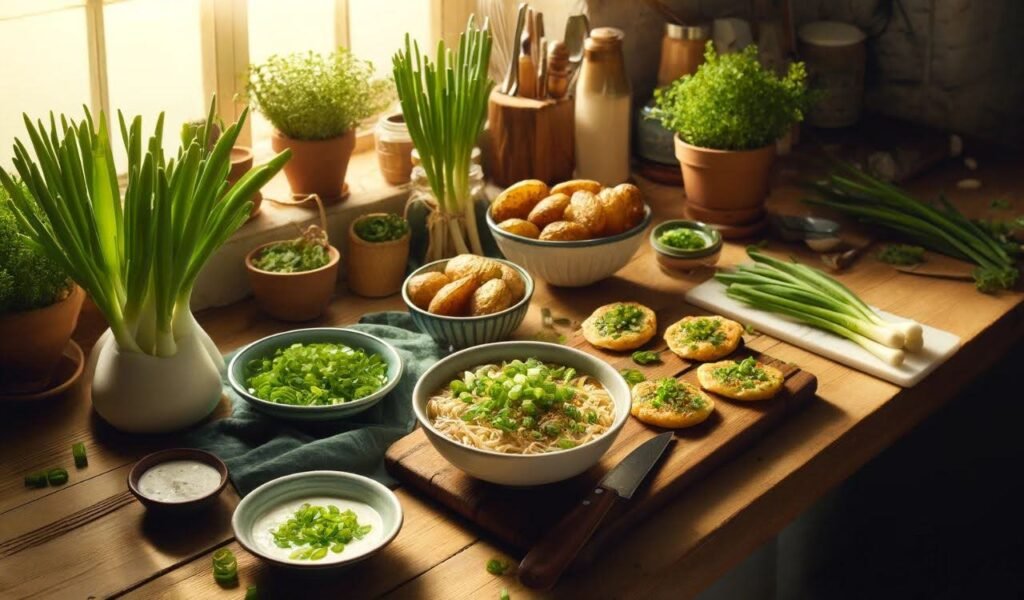
Green onions are incredibly versatile in the kitchen and can elevate almost any dish with their mild, fresh flavor. Toss them into a quick stir-fry with garlic and soy sauce for a crisp, savory touch, or sprinkle them over loaded baked potatoes with sour cream and cheese for a classic comfort food fix. They’re the star ingredient in crispy scallion pancakes and make an easy upgrade to your morning omelet when mixed in with eggs and a bit of cheese.
Use them in place of red onions in homemade salsa or pico de gallo for a milder bite, or scatter them over ramen, miso soup, or chicken noodle just before serving to keep their vibrant color and crunch. For a simple dip, stir chopped green onions into sour cream or Greek yogurt with some garlic powder and a pinch of salt. No matter how you use them, green onions bring a garden-fresh twist to your favorite recipes.
FAQ
Can green onions grow indoors?
Yes! Green onions grow well indoors with enough sunlight or a grow light.
Do green onions need full sun?
They prefer full sun (6–8 hours daily), but can tolerate partial shade.
How long does it take to grow green onions?
They usually take 60–90 days to mature, but you can harvest the greens sooner.
Can I regrow green onions from scraps?
Absolutely. Place the white root ends in water, and they’ll start regrowing in days.
How often should I water green onions?
Keep the soil consistently moist but not soggy—about 2–3 times a week depending on climate.
Do green onions need fertilizer?
They benefit from a balanced or nitrogen-rich fertilizer every few weeks.
Can I plant green onions in pots?
Yes, they grow great in containers with good drainage and at least 6 inches of depth.
Final Thoughts
Planting green onions, whether in your backyard garden or on a sunny windowsill, is a simple and gratifying endeavor. Their fast growth, minimal space requirements, and culinary versatility make them an ideal choice for gardeners of all levels. By following the steps outlined in this guide, you’ll be well on your way to cultivating a thriving green onion crop that enhances your meals and brings the joy of homegrown produce to your table. Happy gardening!

